 July 27, 2017 John E. Ross, KD8IDJ, Editor
| |||||||
ARRL President Issues Call for Members to Reach Out to their Senators to Support S. 1534 ARRL President Rick Roderick, K5UR, is calling on League members to urge their US Senators to support the Amateur Radio Parity Act of 2017, S. 1534. ARRL has opened a RallyCongress page to simplify the task.
"Now is the time for all hams to get involved in the process!" Roderick said. "Many of you already live in deed-restricted communities, and that number grows daily." He urged radio amateurs now restricted by a homeowners association from installing effective outdoor antennas to visit the RallyCongress site and e-mail their two US senators. He also encouraged those not currently affected by deed covenants, conditions, and restrictions (CC&Rs) to support their fellow radio amateurs by doing the same.
"If you want to help create an opportunity -- not available before now -- for Amateurs who live in deed-restricted communities to install effective outdoor antennas on property that you own or lease, send these e-mails today!" Roderick said. "We need you to reach out to your senators today. Right away." S. 1534 was introduced in the US Senate on July 12, marking another step forward for this landmark legislation. Senators Roger Wicker (R-MS) and Richard Blumenthal (D-CT) are the Senate sponsors. The measure will, for the first time, guarantee all radio amateurs living in deed-restricted communities governed by a homeowners association (HOA) or subject to any private land-use regulations, the right to erect and maintain effective outdoor antennas at their homes, while protecting the aesthetic concerns of HOAs. ARRL Publishes its 2016 Annual Report Following the meeting last weekend of the ARRL Board of Directors, ARRL announces the release of its 2016 Annual Report. This year's report departs from past reports in that it focuses on the people who make up ARRL and the larger Amateur Radio community. More than 140 call signs appear in the report, and more than 80 of these call signs belong not to ARRL Headquarters staff or Board members, but rather, to ARRL members.
Reflecting on his experiences this past year, ARRL President Rick Roderick, K5UR, in his Annual Report message reminds members that they make the difference: "The initiatives you will read about in this report show hams bringing people into Amateur Radio in new ways, and from points of entry that maybe you hadn't thought of: college clubs, citizen science, and Maker Faires. Hams just like you are making these things happen." There is extensive coverage of major events like National Parks on the Air (NPOTA), and a discussion of why NPOTA worked so well. Four pages are devoted to Amateur Radio's contribution to emergency preparedness in communities around the country. The 2016 Annual Report was created by ARRL editorial staff under the direction of QST Managing Editor Becky Schoenfeld, W1BXY. QST Assistant Editors Jen Glifort and Caroline Kenney researched and wrote most of the text, with some stories contributed by ARRL Digital Media Support Specialist Alli McLellan. Schoenfeld engaged a freelance designer for the project, who created an exciting and highly readable layout in full color, to highlight the stunning color photography and graphics. Members are encouraged to download and read the Annual Report on the ARRL website. Set Adobe Reader to its two-page viewing mode to better view the larger layout. An archive of past annual reports is also available. ARRL Contest Rule Changes, Clarifications Reflect "Best Practices" in Radiosport Just ahead of the 2017-2018 contest season, ARRL has announced rule changes and clarifications to League-sponsored contests. These include an improved process for submitting logs and reporting scores. Unless otherwise noted, these changes become effective starting with the September VHF Contest.
Log Submission Log submission in the "General Rules for All Contests" has been simplified and revised. Individual contest rules will no longer include a log-submission section.
Logs used for log checking will be posted for public inspection. ARRL will continue to accept paper logs, but these are only eligible for awards at the discretion of the Contest Branch Manager. Logs may be withdrawn up to 10 days following the log submission deadline. Club Competition The new toolset for clubs to comply with the Club Competition rules (Section 8 of the General Rules for All ARRL Contests) has been very well received. For more information and tools for submitting your club's eligibility list, visit the Contest Club Competition -- Club Eligibility Changes page. Log-Checking Penalties Penalties for "zero-point" contacts, such as US-to-US contacts in the ARRL DX, will not be assessed during log checking. Operators may continue to log and submit zero-point contacts. Remote Entries Acting as the control operator for a remotely controlled station in the US or its possessions requires that the operator hold a US license and have sufficient privileges for all operation. CEPT/IARP reciprocal operating authority does not include remote control of a US station. If another operator acts as the on-site control operator, the entry must be in a multioperator category. The location for the entry will be the location of the station, not the operator.
Multiple in-band CQing: Maintaining two or more frequencies to solicit contacts (i.e., "run") on the same band and mode is prohibited. (The IARU HF Championship and the ARRL 10 Meter Contest prohibit this practice, regardless of mode.) Call sign and ARRL November Sweepstakes exchange: The station's call sign must be sent as part of the exchange, e.g., "W1AW, number 123, Alpha, W9JJ, 79, Connecticut." US operators in Canada: The reciprocal operating treaty between the US and Canada requires that the call sign be sent with the Canadian prefix following the call sign, e.g., W9JJ/VE1. Single Operator, FM Only: Cabrillo QSO lines must specify FM as the mode for all FM contacts. For more information, contact the Contest Branch Manager. The Doctor Will See You Now! "Power Supplies" is the topic of the current (July 20) episode of the "ARRL The Doctor is In" podcast. Listen...and learn!
Every 2 weeks, your host, QST Editor-in-Chief Steve Ford, WB8IMY, and the Doctor himself, Joel Hallas, W1ZR, will discuss a broad range of technical topics. You can also e-mail your questions to doctor@arrl.org, and the Doctor may answer them in a future podcast. Enjoy "ARRL The Doctor is In" on Apple iTunes, or by using your iPhone or iPad podcast app (just search for "ARRL The Doctor is In"). You can also listen online at Blubrry, or at Stitcher (free registration required, or browse the site as a guest) and through the free Stitcher app for iOS, Kindle, or Android devices. If you've never listened to a podcast before, download our beginner's guide. Just ahead: "Keys and Keyers." ARISS Reports ISS Packet System is Down The aging Amateur Radio on the International Space Station (ARISS) packet system on 145.825 MHz appears to have stopped functioning altogether, after experiencing some recent problems, and restoring it to operation could take months. ARISS International Chair Frank Bauer, KA3HDO, said the packet system, located in the Columbus module, started to act up late last week, sending only a beacon.
Bauer said the ARISS team has had extensive discussions on how to resolve the problem, starting with some additional troubleshooting with the existing packet module. He said it would take weeks just to develop the required troubleshooting procedures and have NASA approve them, before conducting tests with the ISS crew. This would include an additional power cycle, he said.
"The turnaround time is much longer than usual, because a new crew will soon be arriving on ISS," Bauer explained. "The current crew is focused on the new crew arrival, and there will be about a 1- to 2-week transition after the new crew arrives. On the positive side, one aspect of our troubleshooting -- a second power cycle -- will occur automatically, because ARISS is shut down during crew docking and turned on afterwards." Bauer said troubleshooting would extend beyond this reboot, however. Additional plans with alternative solutions are under discussion within the ARISS team, and all approaches will require coordination within the ARISS International team, development of additional procedures, and involvement of the crew, Bauer said. "People who have carefully followed ISS operations know that crew time continues to evolve with the more extensive research that is occurring on board," Bauer added. "Suffice it to say, it will take longer than what it has taken in the past to work through this issue." Bauer said ARISS wants to set realistic expectations on how long it could take to fix the ISS packet system problem. "At this point, expect a few months with no ARISS packet," he said. Read more Friedrichshafen's Ham Radio Attendance Holds Steady Despite being held in a different month and at the height of the tourist season, Germany's Ham Radio 2017 -- more popularly known by its location, Friedrichshafen -- remained as popular as ever this year. "ARRL is held in high regard by the international Amateur Radio community, and there were many, many compliments shared with our team for ARRL's good work," Inderbitzen reported. He said a German radio amateur donated to the ARRL Spectrum Defense Fund, citing the League's spectrum advocacy efforts.
ARRL also supports DXCC card checking, which was supported by Radiosport Manager Norm Fusaro, W3IZ, and volunteer card checkers from a half-dozen countries. International Amateur Radio Union Region 1 (IARU R1) President Don Beattie, G3BJ, delivered an opening address at the convention. IARU President Tim Ellam, VE6SH/G4HUA, Secretary David Sumner, K1ZZ, and Beattie, also discussed IARU's efforts in a presentation, "Working for the Future of Amateur Radio." Hamvention® General Chair Ron Cramer, KD8ENJ, expressed some envy about the event, sometimes called "Europe's Dayton."
"Ham Radio is a very good event that is extremely well organized," Cramer said. "I wish that we had exhibition halls in Dayton that are as beautiful as the ones here in Friedrichshafen. A lot of Amateur Radio operators come to Dayton and to Friedrichshafen, and we want to support one another. After all, all events of this kind are important." Deutscher Amateur Radio Club (DARC) Chair Steffen Schöppe, DL7ATE, said DARC was "very pleased" with Ham Radio 2017. "Visitors showed great interest in the World Radiosport Team Championship (WRTC 2018), got a lot of information about it, and some also want to stop by the competition in Jessen to get a look at the event itself." WRTC 2018 Organizing Committee President Chris Janssen, DL1MGB, spoke at Ham Radio's official opening. In addition to an indoor booth, WRTC 2018 erected a WRTC-style portable station in the courtyard. WRTC 2018 will take place next July in Germany, in conjunction with the IARU HF Championship.
Schöppe said the international youth forum at Ham Radio 2017 was also very successful, and "the participants had a lot of fun." IARU Region 1 Youth Working Group Chair Lisa Leenders, PA2LS, reported that she welcomed "an enthusiastic group of young people and youth workers" to the Ham Radio youth forum. Ham Camp at Friedrichshafen hosted more than 100 participants, mostly young people. Just ahead of next month's Youngsters on the Air (YOTA) "YOTA UK" international summer camp, the official YOTA flag was carried from the booth of 2016 host, Austria's OeVSV to the booth of 2017 host, the Radio Society of Great Britain (RSGB), to "loud cheering of a group of youngsters." YOTA UK 2017 is August 5-12 in London. Ham Radio 2018 and Maker Faire Bodensee will return the first weekend of June 2018 -- much earlier than usual and some 6 weeks in advance of WRTC 2018. Oklahoma Radio Amateur is First to Score Satellite VUCC from Greenland It took just 4 days -- some of that time without much sleep -- but ARRL member Gabe Zeifman, NJ7H/VE6NJH, of Oklahoma City recently became the first radio amateur to earn VUCC -- working 100 grid squares -- by satellite from Greenland. In fact, his is the first VUCC award of any kind from Greenland. A relatively new licensee, Zeifman, 22, has managed to activate more than 300 grid squares via satellite, as well as nearly 20 DXCC entities. Apart from the operating accomplishment, Zeifman told ARRL, he was attempting to inspire newcomers.
"It was really cool to see our community throughout the world come together to help in this goal," he said. "I really first envisioned this idea when I realized I had nearly 70 grids confirmed from Iceland, and I thought 'hmm, OX [Greenland] is an even better location; I bet it's possible.'" Zeifman said he prefers the linear-transponder satellites, such as SO-50, rather than the FM satellites. He said he may one day get into HF more seriously, but, for now, he finds VHF/UHF/SHF "more fascinating." He said the trip to Greenland, Iceland, and the Faroe Islands with his mother and his sister, was "fantastic," although, he noted, "they may have sometimes been annoyed by my getting up at 3 AM or several times in the night to work passes." Read more. Royal Mint to Welcome Amateur Radio The Royal Mint Experience in Wales will host "The Royal Mint Radio Experience," July 30 until August 5 at the Royal Mint's new visitor center in Llantrisant, Wales. School children and members of the public have been invited to enjoy a fun, informal, and interactive Amateur Radio workshop. According to an announcement from the Radio Society of Great Britain (RSGB), visitors will get the chance to use the FUNcube-1 CubeSat, launched in 2013 and used by schools and educational groups around the world.
Members of RSGB, Barry Amateur Radio Society (BARS), and AMSAT-UK will operate special event station GB4RME (GB 4 Royal Mint Experience); Ofcom granted that call sign just for this event. RSGB Regional Manager and BARS Chairman Glyn Jones, GW0ANA, said he believes this may be the first time Amateur Radio has been allowed to operate from a Royal Mint anywhere in the world. -- Thanks to RSGB In Brief...
One Radio Amateur is Part of New Crew Increment Heading to ISS: European Space Agency (ESA) Astronaut Paolo Nespoli, IZ0JPA, NASA astronaut Randy Bresnik, and Russian cosmonaut Sergey Ryazanskiy will head to the International Space Station (ISS) on July 28. They will launch from Baikonur Cosmodrome in Kazakhstan. The Expedition 52/53 crew will spend more than 4 months together aboard the orbital complex before returning to Earth in December. After launching in their Soyuz MS-05 spacecraft, the trio will travel for 6 hours before docking. Once the hatches between the Soyuz and ISS open, Expedition 52 Commander Fyodor Yurchikhin, RN3FI, and Flight Engineers Peggy Whitson, ex-KC5ZTD, and Jack Fischer, K2FSH, will welcome the new crew members aboard. Their arrival will double the population of the ISS. Expedition 52 will continue work on hundreds of experiments in biology, biotechnology, physical science, and Earth science aboard the ISS, NASA said.
Getting It Right! In "Many Special Events Will Be on the Air to Mark the Total Solar Eclipse in August," in the July 20 edition of The ARRL Letter, a location was incorrect. The Southern Illinois University Amateur Radio Club (SIUARC) solar eclipse special event station W9S, August 18-22, will operate from Carbondale, Illinois. The K7RA Solar Update Tad Cook, K7RA, Seattle, reports: All of the indicators we track fell last week. Because there were no sunspots in 6 of the 7 days in the July 20-26 reporting period, the average daily sunspot number dropped from 26.6 to 1.7. Average daily solar flux declined from 85.9 to 69.7. Average daily planetary A index dropped from 13 to 11.9, while the mid-latitude A index went the opposite direction, from 10.9 to 12.9.
The predicted planetary A index is 8 on July 27-28; 5, 6, 12, 10, and 8 on July 29-August 2; 5 on August 3-5; 25 and 10 on August 6-7; 5 on August 8-15; 15 on August 17-18; 12 and 8 on August 19-20; 5 on August 21-31; 25, 10, and 8 on September 1-3, and 5 on September 4-9. A reminder: the Solar Eclipse QSO Party (SEQP) on Monday, August 21, 1400-2100 UTC, is a wide-ranging propagation experiment intending to observe what happens when the Moon blocks ionizing solar radiation from the ionosphere. It's sponsored by ARRL and HamSCI. Sunspot numbers for July 20 through 26, 2017 were 0, 0, 0, 0, 0, 12, and 0, with a mean of 1.7. 10.7-centimeter flux was 70.2, 69.4, 69.5, 70.6, 70.1, 69.8, and 68.6, with a mean of 69.7. Estimated planetary A indices were 7, 14, 16, 14, 12, 9, and 11, with a mean of 11.9. Estimated mid-latitude A indices were 6, 13, 18, 16, 13, 9, and 15, with a mean of 12.9. Send me your reports and observations. Just Ahead in Radiosport
See the ARRL Contest Calendar for more information. For in-depth reporting on Amateur Radio contesting, subscribe to The ARRL Contest Update via your ARRL member profile e-mail preferences. Upcoming ARRL Section, State, and Division Conventions
Find conventions and hamfests in your area.
. .
Subscribe to...
Free of charge to ARRL members...
Find ARRL on Facebook! Follow us on Twitter and Instagram! | |||||||
%20Logo(1).png) "[W]e are at a crossroad in our efforts to obtain passage of The Amateur Radio Parity Act," Roderick said. He said the campaign to secure passage of the bill scored a major victory earlier this year when H.R. 555 passed unanimously in the US House of Representatives. Obtaining passage of the companion Senate bill, S. 1534, is the final legislative hurdle.
"[W]e are at a crossroad in our efforts to obtain passage of The Amateur Radio Parity Act," Roderick said. He said the campaign to secure passage of the bill scored a major victory earlier this year when H.R. 555 passed unanimously in the US House of Representatives. Obtaining passage of the companion Senate bill, S. 1534, is the final legislative hurdle..JPG)
 In his letter, CEO Tom Gallagher, NY2RF, writes about "the people of ARRL: the Board, the staff, the membership, the various volunteers arrayed across the country, by our patrons and donors, by our served agencies, and by the Amateur Radio community, writ large. These are the people of ARRL, and here are their stories. This annual report celebrates their contribution and tells the stories of how each of them labors mightily, every day, to advance the art, the science, and the enjoyment of Amateur Radio."
In his letter, CEO Tom Gallagher, NY2RF, writes about "the people of ARRL: the Board, the staff, the membership, the various volunteers arrayed across the country, by our patrons and donors, by our served agencies, and by the Amateur Radio community, writ large. These are the people of ARRL, and here are their stories. This annual report celebrates their contribution and tells the stories of how each of them labors mightily, every day, to advance the art, the science, and the enjoyment of Amateur Radio."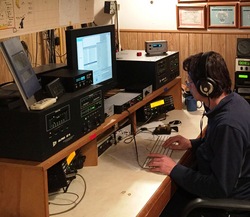 "These changes reflect current 'best practices' in the contest community and help us improve the quality of the competition and reporting of results," ARRL Contest Branch Manager Bart Jahnke, W9JJ, said. "For example, getting the log data into log checking more quickly will allow us to post preliminary results online for nearly all contests."
"These changes reflect current 'best practices' in the contest community and help us improve the quality of the competition and reporting of results," ARRL Contest Branch Manager Bart Jahnke, W9JJ, said. "For example, getting the log data into log checking more quickly will allow us to post preliminary results online for nearly all contests."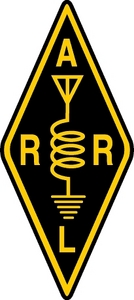 Operating Rules
Operating Rules.jpg) Sponsored by
Sponsored by 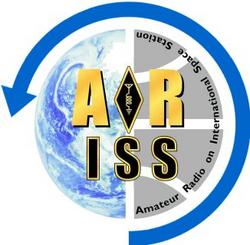 "The ARISS team requested a power recycle by the crew, and with that power recycle, the packet system appears to have stopped functioning completely," Bauer said in a news release. "Note that this unit has been on orbit for 17 years. It was launched on the STS-106 Space Shuttle Atlantis mission in September 2000 and was built, tested, and certified for flight about 20 years ago."
"The ARISS team requested a power recycle by the crew, and with that power recycle, the packet system appears to have stopped functioning completely," Bauer said in a news release. "Note that this unit has been on orbit for 17 years. It was launched on the STS-106 Space Shuttle Atlantis mission in September 2000 and was built, tested, and certified for flight about 20 years ago.".jpg)
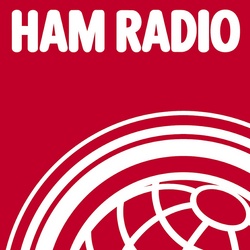 This was the 42nd annual Ham Radio, and the Friedrichshafen Fairground reported that Ham Radio and the concurrent Maker Faire Bodensee (Lake Constance) attracted 17,110 visitors this year, compared to 17,230 last year. Heading up the ARRL contingent were President Rick Roderick, K5UR, and International Affairs Vice President Jay Bellows, K0QB. ARRL Marketing Manager Bob Inderbitzen, NQ1R, said the League puts in an appearance at Friedrichshafen each year, greeting international members, which number more than 9,000, and networking with other national radio societies.
This was the 42nd annual Ham Radio, and the Friedrichshafen Fairground reported that Ham Radio and the concurrent Maker Faire Bodensee (Lake Constance) attracted 17,110 visitors this year, compared to 17,230 last year. Heading up the ARRL contingent were President Rick Roderick, K5UR, and International Affairs Vice President Jay Bellows, K0QB. ARRL Marketing Manager Bob Inderbitzen, NQ1R, said the League puts in an appearance at Friedrichshafen each year, greeting international members, which number more than 9,000, and networking with other national radio societies..jpg)
.jpg)

 "I thought it could get more people interested in satellites in general -- VUCC is very achievable for anyone -- and could also get more people interested in roving," said Zeifman, who began training this week to become an air traffic controller. "I was overwhelmed by the support I got; it was really astonishing the number of people that helped!" He said one operator activated eight grids for him, while others who don't typically rove, visited at least one neighboring grid square to give him a new one.
"I thought it could get more people interested in satellites in general -- VUCC is very achievable for anyone -- and could also get more people interested in roving," said Zeifman, who began training this week to become an air traffic controller. "I was overwhelmed by the support I got; it was really astonishing the number of people that helped!" He said one operator activated eight grids for him, while others who don't typically rove, visited at least one neighboring grid square to give him a new one. "We're delighted to be supporting this event, which will give visitors to the Royal Mint a chance to experience the wonder of Amateur Radio and satellite communication," said RSGB General Manager Steve Thomas, M1ACB. "Amateur Radio has many links with the science, technology, engineering, and maths (STEM) curriculum and can lead to rewarding careers."
"We're delighted to be supporting this event, which will give visitors to the Royal Mint a chance to experience the wonder of Amateur Radio and satellite communication," said RSGB General Manager Steve Thomas, M1ACB. "Amateur Radio has many links with the science, technology, engineering, and maths (STEM) curriculum and can lead to rewarding careers."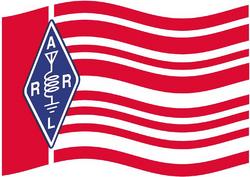 New 222 MHz and Up Contest Debuts August 5-6 Weekend: ARRL's new
New 222 MHz and Up Contest Debuts August 5-6 Weekend: ARRL's new  AMSAT 2017 Space Symposium Issues First Call for Papers: AMSAT-NA is seeking papers and poster presentation for its 2017 AMSAT
AMSAT 2017 Space Symposium Issues First Call for Papers: AMSAT-NA is seeking papers and poster presentation for its 2017 AMSAT 
.jpg) Arecibo Observatory Ionospheric Heating Campaign Under Way:
Arecibo Observatory Ionospheric Heating Campaign Under Way:  The latest predicted solar flux (as of July 26) shows 69, 70, 72, and 76 on July 27-30; 80 on July 31-August 2; 82 on August 3-11; 80 and 75 on August 12-13; 70 on August 14-25; 80 on August 26; 82 on August 27-September 1; 80 on September 2-4, and 82 on September 5-7.
The latest predicted solar flux (as of July 26) shows 69, 70, 72, and 76 on July 27-30; 80 on July 31-August 2; 82 on August 3-11; 80 and 75 on August 12-13; 70 on August 14-25; 80 on August 26; 82 on August 27-September 1; 80 on September 2-4, and 82 on September 5-7.







